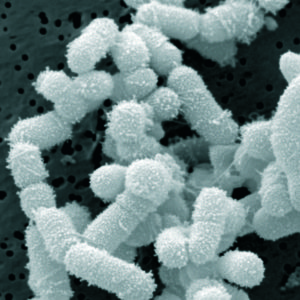 A group of international researchers got together and proposed reclassifying all the Lactobacillus species into 25 different groups (genera) a few years ago.
A group of international researchers got together and proposed reclassifying all the Lactobacillus species into 25 different groups (genera) a few years ago.
This was done because the Lactobacillus group had gotten too large and diverse, with over 250 bacterial species in it. The proposed name changes were then adopted by the leading microbiology society, which is why scientists currently use both new and old bacterial names, or just one or the other.
One bacteria important for sinus health is L. sakei. Lactobacillus sakei has now been reclassified as Latilactobacillus sakei, but both terms are used in research and elsewhere. The abbreviation L. sakei stays the same.
Most of the common Lactobacillus species that are used in probiotics have a name change, but typically either name (new and old) is acceptable. What many companies do to avoid confusion is to just use the abbreviated name (e.g., L. sakei, L. rhamnosus, and L. casei).
Examples of name changes for commonly used probiotic species: Lactobacillus sakei is now Latilactobacillus sakei, Lactobacillus rhamnosus is now Lacticaseibacillus rhamnosus, Lactobacillus plantarum is now Lactiplantibacillus plantarum, Lactobacillus brevis is now Levilactobacillus brevis, Lactobacillus salivarius is now Ligilactobacillus salivarius, Lactobacillus fermentum is now Limosilactobacillus fermentum, and Lactobacillus reuteri is now Limosilactobacillus reuteri.
However, the names of some commonly used probiotic species stayed the same, such as Lactobacillus crispatus, Lactobacillus gasseri, and Lactobacillus johnsonii.
Excerpts from ISAPP (International Scientific Association for Probiotics and Prebiotics): New names for important probiotic Lactobacillus species
The genus Lactobacillus was listed as the fifth most important category of living organism to have influenced the planet throughout its evolutionary history in a 2009 book, What on Earth Evolved?. From their central role in food fermentations around the globe to their ability to benefit health in their human and animal hosts, species of Lactobacillus have great importance in our lives.
But for the past several decades there’s been a problem brewing with this genus. Using the research tools available at the time, researchers through history who discovered new bacteria grouped many diverse species under the “umbrella” of the genus Lactobacillus.
These species were a diverse group, and when DNA analysis tools became more sophisticated, many were found to be only loosely related. A consensus grew among scientific experts that, given the genetic makeup of these bacteria, the current Lactobacillus genus was too diverse and did not conform to nomenclature conventions. Moreover, it was important to split the genus into functionally relevant groups that shared certain physiological, metabolic properties and lifestyles in order to facilitate functional and ecological studies on bacteria from this genus.
To tackle this problem, 15 scientists (see below) from 12 different institutions and 7 different countries came together, applying whole genome analysis to analyze each Lactobacillus species. Their proposal, which was accepted for publication in the official journal of record for bacterial names, is that the species once contained within the Lactobacillus genus should now spread over 25 genera, including 23 novel genera (see paper link here).
To date, bacteria in the group Bifidobacterium have not changed, but nomenclature changes are expected soon for this genus, too.
